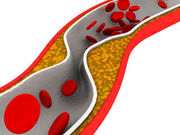CCTA can identify location of guidewires during chronic total occlusion intervention
TUESDAY, June 7, 2016 (HealthDay News) — Coronary computed tomographic angiography (CCTA) is feasible for identifying the location of guidewires during chronic total occlusion (CTO) intervention, according to a study published in the June 15 issue of The American Journal of Cardiology.
Byeong-Keuk Kim, M.D., Ph.D., from Severance Cardiovascular Hospital in Seoul, South Korea, and colleagues enrolled 61 patients scheduled for elective CTO intervention who underwent CCTA and on-site analyses during intervention. The location of guidewires was identified using transverse axial and the curved multiplanar images in a 360-degree view, along with adjustment of window condition. For specific cases requiring enhancement of the distal part of the CTO, intracoronary contrast injection was used.
The researchers found that most CCTAs were performed to confirm the location of a single guidewire; CCTA was also performed to assess parallel or retrograde wires (three and five patients, respectively). With immediate transaxial images, the initial identification rate for guidewire location was 56 percent, which increased to 87 percent after interactive onsite uses of the curved multiplanar images (P < 0.001). A numerically higher success rate was seen for cases in which guidewire location could be predicted with CCTA evaluation versus those that could not (83 versus 63 percent; P = 0.174). There were no specific complications after CCTA and CTO procedures.
“Intraprocedural CCTA for identifying the location of the guidewires is feasible and safe when used for various CTO procedural steps,” the authors write.
Copyright © 2016 HealthDay. All rights reserved.








